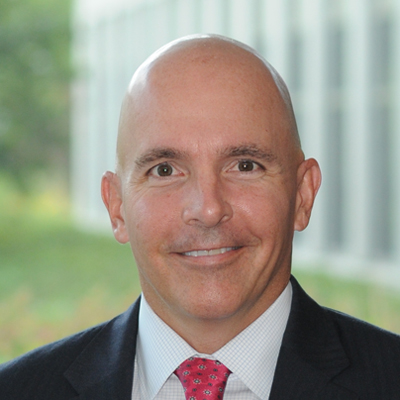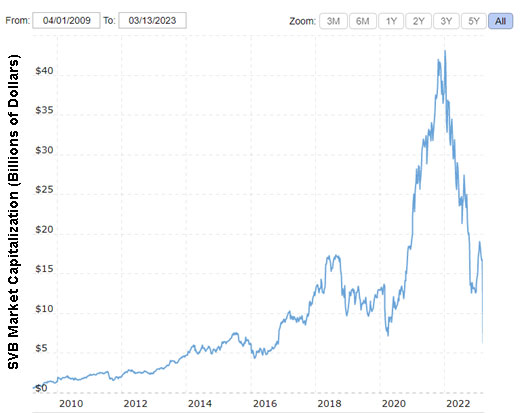March 14, 2023

By Joe Halwax, CAIA, CIMA
Managing Director, Institutional Investment Services
and

Dave Zellner
Chief Investment Officer
Last week the United States suffered the second largest bank failure in its history. Amid a run on deposits, Silicon Valley Bank (SVB) lost 60% of its market value on Thursday, March 9, and within the next day it was taken over by the Federal Deposit Insurance Corporation (FDIC).
To make matters worse, over the weekend New York bank regulators shut down another financial institution, Signature Bank (the third-largest bank failure ever), while others in the industry experienced volatility during trading hours yesterday.
The FDIC, U.S. Treasury and Federal Reserve (Fed) have taken immediate steps to prevent more dominoes from falling in the banking system, including promising that all depositors at SVB and Signature Bank would have access to all their money yesterday.
Bank Industry Volatility: Video Update from Wespath
Wespath's Joe Halwax and Dave Zellner discuss how recent developments at Silicon Valley Bank (SVB), Signature Bank and Credit Suisse are affecting the markets and economy.
These stories are still developing, but many have already begun to speculate whether the collapse of SVB and Signature Bank are similar to the events of the Great Financial Crisis. After all, SVB’s failure is second only to that of Washington Mutual, or “WaMu,” which occurred in 2008. Others have also reflected on the Lehman Brothers bankruptcy from that year.
Nevertheless, there do appear to be some crucial differences between 2008’s financial sector woes and these recent events. The 2008 crises resulted from poor lending practices. Problems at Silicon Valley Bank are linked to a liquidity crisis resulting from excessive withdrawals by bank depositors. These deposits were invested in relatively safe assets, but persistently rising interest rates and certain factors specific to SVB adversely affected the value of these assets.
Still, these events were unexpected and could lead to more near-term economic uncertainty. In these moments, we are reminded of our core Investment Beliefs, which include maintaining a “Diversified, Long-Term Perspective.” While Wespath acknowledges that these unexpected events could have adverse near-term impacts, we remain steadfast in our belief the U.S. and world economies have been—and will continue to be—resilient in the face of near-term setbacks.
How does this affect Wespath’s investments?
Wespath’s diversified investment approach avoided the bank closures having a sizeable impact on fund performance.
Our primary U.S. equity funds—the U.S. Equity Fund – P Series and the U.S. Equity Fund – I Series, designed for participants and institutional investors, respectively—had a very small allocation to SVB and Signature Bank. These positions did not materially impact the returns of those funds last week.1
More broadly, both funds had allocations of less than 2% to the regional banking industry as of Friday, March 10, which was comparable to the exposure to regional banks in their benchmark, the Russell 3000 Index. While the financial sector was the worst performing sector in the U.S. market last week, these funds’ holdings in technology, health care and energy stocks were much more impactful on relative performance.
We also invest in alternative investments, such as private equity and private real estate. Some of the investments in these strategies did have credit lines and working capital deposits with SVB. Nevertheless, as a result of the government guaranteeing access to deposits—and since alternative investments are a relatively small percentage of our equity funds—SVB’s business with private equity firms had minimal impact on Wespath institutional clients and participants.
What is SVB?
SVB is a commercial bank founded in 1983 and based in California. Prior to the events of last week, the bank had $207 billion in assets and $74 billion in loans. SVB is focused on lending to niche sectors including technology, biotechnology and life sciences, and providing financial services to venture capital and private equity firms. SVB had a strong share of the market in this space, noting on its website that it did business with 44% of all venture capital-backed tech and healthcare companies that went public in 2022.
SVB saw strong growth in 2020 and 2021, supported by large amounts of fiscal and monetary stimulus that fueled its tech-heavy client base. With a market value of just under $15 billion pre-pandemic, SVB’s valuation has climbed in recent years and was approximately $41 billion as recently as January 2022. SVB’s stock was part of the S&P 500 index, and it was the 16th largest U.S. bank at the time of its failure. The stock price reached $747 in late 2021 and closed at $268 as recently as Monday, March 7. It is now worthless.
SVB Financial Group (SIVB) Valuation History

(Source: Macrotrends.net)
What happened to SVB that forced it into FDIC receivership?
SVB saw its deposits swell from $60 billion in Q1 2020 to $200 billion in Q4 2022 as technology firms experienced rapid growth and funding. SVB invested these deposits in longer term fixed rate securities, namely U.S. Treasuries and mortgage-backed securities (MBS). As the Fed rapidly hiked rates in 2022, the value of these bond holdings fell. Meanwhile, the cost of capital for SVB’s tech-heavy client base rose, and funding became more difficult. With funding scarcer, SVB’s client base was forced to access their deposits to fund their operating expenses, and the bank sold assets to raise cash, taking a $1.8 billion loss. As SVB signaled the need to raise over $2 billion in new capital, panic ensued and customer deposits fled, creating the liquidity stress that forced the FDIC takeover.
What has the government done so far?
A lot of the regulatory response occurred during emergency meetings last weekend. The three critical issues discussed over the weekend were:
Around 4 p.m. Central time on Sunday, March 12, the FDIC, Treasury and Fed announced the following for both SVB and Signature Bank:
In short, equity investors and certain bondholders in these banks will have their investments wiped out, but depositors will be made whole—which was one of the major uncertainties heading into the weekend. Regulators have also said that this plan means that no financial losses will be borne by taxpayers.
What is the potential for “contagion” to other banks and the broad markets?
The U.S. banking system is very different than 2008, with less use of borrowed funds and more equity capital. While this means the banking system is generally stronger than it was in 2008, there still may be cross currents that present significant challenges. 2008 also provided a lesson in how these stories sometimes play out over time. Roughly a week after Lehman Brothers shut down, investors began to discover the problems at the insurance giant AIG, a firm infrequently mentioned among the general public up to that point. It’s too early to tell whether something similar will occur this time, but we are already seeing pressure—from both investors and depositors—at other banks with certain similarities to SVB.
Nevertheless, we know from the regulatory actions described above that the government has prioritized avoiding contagion. In addition to supporting depositors and hopefully easing the fears of banking customers elsewhere, the new Fed program should help alleviate some industry headwinds and prevent further bank runs. Nevertheless, we will continue to monitor this historic bank failure and plan to update participants and clients accordingly.
1 Historical returns are not indicative of future performance. Fund returns are net of fees. Please refer to the Investment Funds Description – P Series and Investment Funds Description – I Series for more information about the funds. This is not an offer to purchase securities.
What themes would you like us to cover in future blog posts? Let us know at [email protected]
To receive this chart each week via our Wespath Market Update e-mail, please contact our team at [email protected].
We have updated our website with a new look and made it simple to navigate on any device.
We will continue to add more valuable information and features. Please let us know how we are doing.
P.S. For plan sponsors and plan participants, we have a new look for you too. Check out the Wespath Benefits and Investments website.
